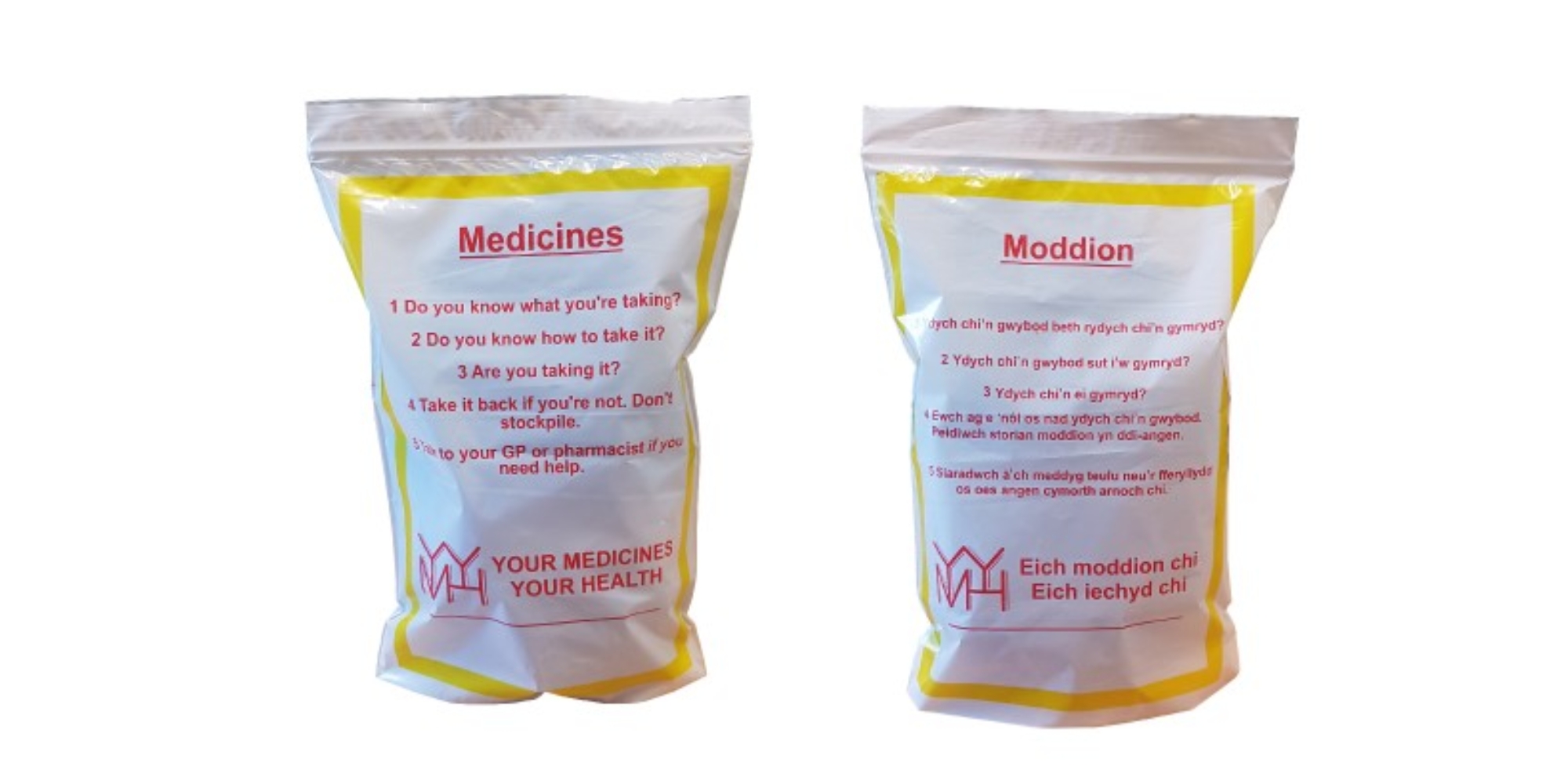Custom Printed Bags Enhance Campaign Effectiveness
Posted in: Case Studies 6th April 2023
Background:
In the heart of Wales, a hospital began running a campaign whereby they encouraged patients to bring unwanted medicines into their pharmacy so they could be safely destroyed. This campaign was to ensure that expired and unused medication was disposed of correctly to avoid putting others at risk.
By holding onto medication for an extended period of time, this ran the risk of ingesting out of date medicine in error, or medicine cupboard purges where they were thrown in bulk into general waste. This new introduction mean that the pharmacy would be able to destroy the medication in bulk using a denaturing kit and have peace of mind that the medicine wouldn’t get into the wrong hands.
Problem:
When rolling out this campaign, the hospital pharmacy soon discovered that they needed to provide a guide or method for the patients to return medication as some patients were unsure of the process.
They found that when people were returning medication, they were rooting through handbags and carrier bags to find strips and boxes of tablets. As well as this, some patients were returning to the pharmacy more than once as they’d left items at home. There were even instances where medication was missing from their bags and assumed they had fallen out in the journey to the hospital, which ultimately then ran the risk of the medicine being consumed by the general public, putting both vulnerable adults and children at risk.
Solution:
During a discussion with Valley Northern, the hospital expressed their need for a way to promote their campaign and ensure the medication returns reached them safely. They needed a solution that would help to reduce patient anxiety, improve patient satisfaction, and demonstrate the hospital's commitment to providing excellent patient care. The hospital staff needed to find a solution that was cost-effective and met the specific needs of their Welsh-speaking patients.
Helping them resolve this issue, we came up with the idea of a bag printed with returns information and guides to hand out to those wanting to return items. Acknowledging that the hospital was based in Wales, we printed one side with English and the other with Welsh to make sure that the information was as comprehensible as possible.
The bag was white with a yellow border and red writing to ensure that the message was clearly displayed and was legible. We also ensured that the medication would remain secure within the bag so introduced a secure grip seal top to eliminate the risk of medication falling out or being tampered with on its journey to the hospital. We also produced the bag using a strong and resistat plastic to ensure the ultimate safety of the contents inside. To accommodate for holding multiple items, the bag had a gusset bottom which meant that the bag would stand up for easy filling and also ensure there was ample room for filling.
Results:
The dual language printed bags for returning medication were a success. Patients who spoke Welsh were happy to receive a bag that was clearly labelled in their own language, and this reduced their anxiety and confusion when returning medications. The hospital received positive feedback from patients, who felt that the process of returning their unused medication was easy and stress-free thanks to the introduction of the bags.
The hospital staff also found that the new bags were easier to use and reduced the risk of errors during the returns process. The bags were more durable and less likely to break, which meant that medications were less likely to be damaged during transport.
Conclusion:
The hospital recognized the need to provide Welsh and English speaking patients with a clear and easy-to-understand way to return medications. Working with Valley Northern, they were able to design and produce a dual-language printed bag that met the needs of their patients while also being cost-effective and easy to use. For Valley Northern, success of the new bags demonstrated the importance of listening to customer’s challenges feedback and finding creative solutions to meet their needs.
